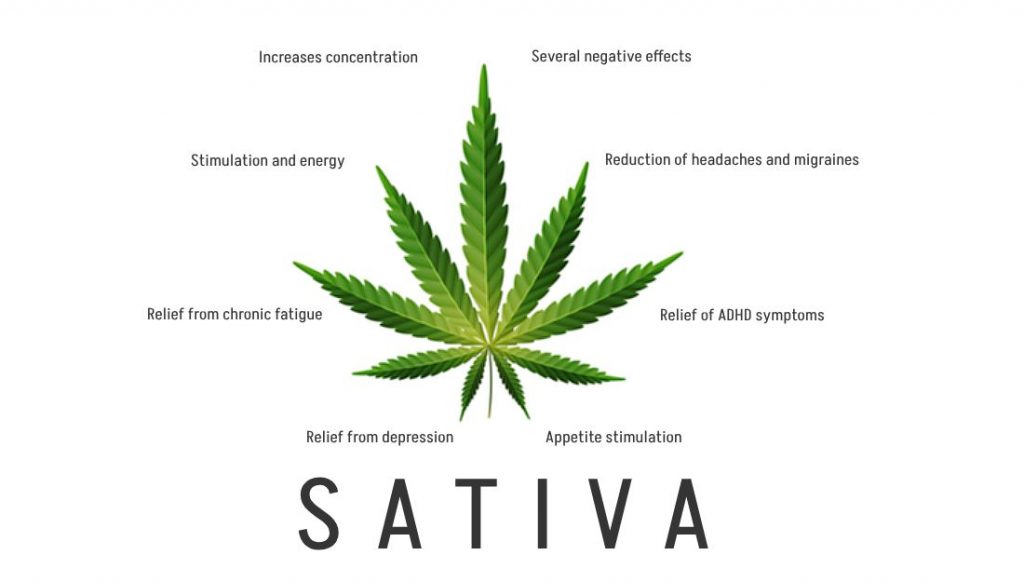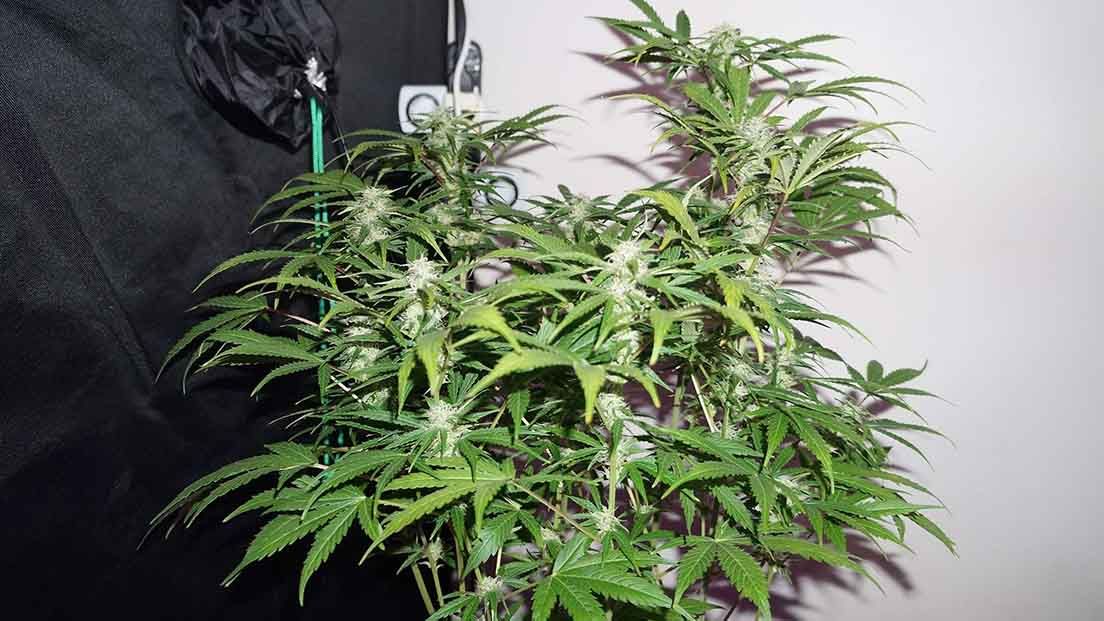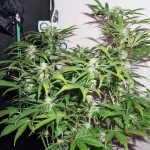Sativa, Positive and Negative Effects
Surely you have often wondered about marijuana sativa, what it is, what it looks like, its effects. Well, in today’s content you will be able to solve all your doubts about this subspecies of Cannabis Sativa L. We will focus on Cannabis Sativa and its effects, although we will also introduce you to some more information about this wonder of nature.

What is Cannabis Sativa?
Let’s embark on a journey into the world of Cannabis Sativa, a fascinating plant species that has been intertwined with human culture for thousands of years. Known for its tall and slender appearance, Sativa plants are a prominent variety of cannabis that have been cultivated for their potent resinous glands, known as trichomes. These trichomes house a treasure trove of compounds, including cannabinoids and terpenes, which are responsible for the plant’s distinctive effects.
Unlike their bushy Indica counterparts, Sativa plants can grow to impressive heights, often reaching up to 20 feet when grown outdoors. They are characterized by their narrow, serrated leaves and loosely clustered flowers, which can range in colour from light green to a golden hue. But the true magic of Sativa lies in its unique chemical composition, which gives rise to a range of effects that are as diverse as the plant itself.
Origin of Sativas
The story of Sativa begins in the equatorial regions of the world. Originally, Sativa plants thrived in countries located along the equator, such as Colombia, Mexico, Thailand, and several African nations. These warm climates provided the perfect conditions for Sativa plants to grow and flourish, leading to the development of a variety of strains with unique flavours, aromas, and effects.
Over time, as humans began to travel and trade, Sativa seeds were spread around the world, leading to their cultivation in a variety of climates and conditions. This has resulted in a rich diversity of Sativa strains, each with its own unique characteristics and effects. Despite this diversity, all Sativa strains share a common lineage that traces back to those original equatorial plants.
Differences between Sativa and Indica
When it comes to cannabis, one of the most fundamental distinctions is that between Sativa and Indica varieties. While both are subspecies of the cannabis plant, they differ in their physical characteristics, growth patterns, and the effects they produce. Sativa plants, as we’ve mentioned, are tall and slender, with narrow leaves, and they tend to have a longer flowering cycle than Indica plants. They are also known for their uplifting and cerebral effects, often promoting creativity, energy, and a sense of euphoria.
On the other hand, Indica plants are typically shorter and bushier, with broad, chunky leaves. They have a shorter flowering cycle, which makes them well-suited to cooler climates with shorter summers. Indica strains are often associated with relaxing and sedative effects, making them a popular choice for evening use or for those seeking relief from physical discomfort.
Why is Sativa Capable of Producing Effects in Humans?
The ability of Sativa to produce effects in humans is down to its unique chemical composition. Sativa plants are rich in cannabinoids, a group of compounds that interact with the endocannabinoid system in the human body. This system plays a key role in regulating a variety of physiological processes, including mood, appetite, sleep, and pain perception.
When consumed, the cannabinoids in Sativa interact with the endocannabinoid system, leading to a range of effects. The most well-known cannabinoid is delta-9-tetrahydrocannabinol (THC), which is responsible for the psychoactive effects of cannabis. However, Sativa plants also contain a variety of other cannabinoids, as well as terpenes, which contribute to the plant’s distinctive aroma and flavour, and may also influence its effects.
Chemistry of Sativa Marijuana
The chemistry of Sativa marijuana is a complex and fascinating subject. At the heart of this complexity are the plant’s cannabinoids and terpenes. Cannabinoids are chemical compounds that interact with the cannabinoid receptors in our bodies, leading to a range of effects. Sativa strains are often high in THC, the primary psychoactive compound in cannabis, but they also contain other cannabinoids, such as cannabidiol (CBD), cannabigerol (CBG), and tetrahydrocannabivarin (THCV).
Main Active Compounds in These Plants
The main active compounds in Sativa plants are the cannabinoids and terpenes. THC is often the most prevalent cannabinoid in Sativa strains, known for its psychoactive effects. However, other cannabinoids also play a significant role. CBD, for example, is non-psychoactive and has been studied for its potential therapeutic benefits. CBG, another non-psychoactive cannabinoid, is thought to have anti-inflammatory and neuroprotective properties.
The terpenes in Sativa plants not only contribute to their aroma and flavour but may also have therapeutic benefits. For example, myrcene, the most common terpene in cannabis, is thought to have sedative and analgesic properties. Limonene has a citrusy aroma and may have mood-enhancing effects, while terpinolene, with its floral and herbal aroma, may have antioxidant and sedative properties.
Effects of Sativa
The effects of Sativa are as diverse as the strains themselves. Thanks to their high THC content and unique terpene profiles, Sativa strains are often associated with uplifting and cerebral effects. Users often report feelings of euphoria, increased energy, and enhanced creativity. These strains are typically best suited for daytime use, as they can be stimulating and may interfere with sleep if consumed later in the day.
Positive Sativa Effects
Sativa strains are often celebrated for their uplifting and energising effects. They can stimulate creativity, making them a favourite among artists, musicians, and anyone looking for a burst of inspiration. Sativa strains can also enhance physical activities such as hiking, yoga, and even chores, turning mundane tasks into enjoyable experiences.
Stimulation and Energy
One of the hallmark effects of Sativa strains is their ability to stimulate and energise. Unlike Indica strains, which are often associated with relaxation and sedation, Sativa strains can provide a boost of energy, making them a popular choice for daytime use. This energising effect can be particularly beneficial for those dealing with fatigue or for those who need a pick-me-up during the day.
The stimulating effects of Sativa can also enhance focus and productivity. Many users report that Sativa strains help them stay focused on tasks, making these strains a favourite among those with attention deficit disorders. However, it’s important to note that the stimulating effects of Sativa can be too much for some, leading to feelings of restlessness or hyperactivity.
Mood Enhancement
Sativa strains are often associated with mood enhancement. Many users report feelings of euphoria and happiness after consuming these strains. This mood-enhancing effect can be particularly beneficial for those dealing with mood disorders such as depression or anxiety. However, it’s important to note that while Sativa strains can help manage mood symptoms for some, they can exacerbate these symptoms for others, particularly those with a predisposition to anxiety.
Increased Concentration
Another potential benefit of Sativa strains is their ability to enhance concentration. Many users report that these strains help them stay focused and productive, making them a popular choice for those who need to get work done. This increased concentration can be particularly beneficial for those with attention deficit disorders or for those who simply need a little help staying on task.
Negative Sativa Effects or Side Effects
While Sativa strains can have many positive effects, they can also have some potential side effects. One of the most common side effects of Sativa strains is anxiety or paranoia. This is likely due to the high THC content of many Sativa strains, which can overstimulate the endocannabinoid system and lead to feelings of unease. However, not everyone will experience this side effect, and some may find that Sativa strains help to manage their anxiety.
Another potential side effect of Sativa strains is restlessness or difficulty sleeping. Due to their stimulating effects, Sativa strains can make some users feel too energised, particularly if consumed later in the day. This can lead to difficulty falling asleep or staying asleep. For this reason, Sativa strains are often recommended for daytime use.
Restlessness
One of the potential side effects of Sativa strains is restlessness. Due to their stimulating effects, these strains can make some users feel too energised or “wired”. This can lead to feelings of restlessness or difficulty relaxing, particularly if consumed in large amounts or if the user is sensitive to the effects of THC.
Restlessness from Sativa strains can also interfere with sleep. Many users report that consuming Sativa strains later in the day makes it difficult for them to fall asleep or stay asleep. For this reason, it’s often recommended to use Sativa strains earlier in the day and to switch to a more relaxing Indica strain in the evening.
Excessive Energy Increase
While the energising effects of Sativa strains can be a benefit for some, for others it can lead to an excessive increase in energy. This can manifest as feelings of hyperactivity or jitteriness, similar to consuming too much caffeine. In some cases, this can lead to difficulty focusing or feelings of being overwhelmed.
It’s also worth noting that the energising effects of Sativa strains can vary widely depending on the specific strain and the individual user. Some users may find certain Sativa strains to be too stimulating, while others may find them to be just right. As with any form of cannabis, it’s important to start with a low dose and go slow, especially if you’re new to Sativa strains.
Racing Thoughts
Another potential side effect of Sativa strains is racing thoughts. Due to their cerebral effects, these strains can sometimes lead to a rapid flow of thoughts, which can be overwhelming for some users. This is particularly true for those who are prone to anxiety or who have a low tolerance for THC.
However, it’s worth noting that not all users will experience this side effect, and some may find the cerebral effects of Sativa strains to be beneficial for creativity and problem-solving. As always, it’s important to start with a low dose and go slow, particularly if you’re new to Sativa strains or if you’re sensitive to the effects of THC.
Positive Medicinal Effects of Sativas
Sativa strains have been used medicinally for a variety of purposes. One of the most common uses is for mood disorders such as depression and anxiety. Due to their uplifting and mood-enhancing effects, Sativa strains can help to alleviate the symptoms of these disorders and promote a sense of well-being.
Another common medicinal use of Sativa strains is for chronic fatigue. Due to their energising effects, these strains can help to combat feelings of fatigue and increase energy levels. Sativa strains are also often used to stimulate appetite, making them a useful tool for those dealing with conditions that cause a loss of appetite, such as cancer or HIV/AIDS.
Appetite Stimulation
One of the medicinal benefits of Sativa strains is their ability to stimulate appetite. This can be particularly beneficial for those dealing with conditions that cause a loss of appetite, such as cancer or HIV/AIDS. By stimulating appetite, Sativa strains can help to ensure that those dealing with these conditions are able to maintain their nutritional status and overall health.
Depression Relief
Another medicinal benefit of Sativa strains is their potential to alleviate the symptoms of depression. Due to their uplifting and mood-enhancing effects, these strains can help to combat feelings of sadness, apathy, and lack of motivation that are often associated with depression. Many users report feeling a sense of euphoria and well-being after consuming Sativa strains, which can be a welcome relief from the symptoms of depression.
Chronic Fatigue Relief
One of the potential medicinal benefits of Sativa strains is their ability to combat chronic fatigue. Due to their energising effects, these strains can help to increase energy levels and combat feelings of fatigue. This can be particularly beneficial for those dealing with chronic fatigue syndrome or other conditions that cause persistent tiredness.
Headache and Migraine Reduction
Another potential medicinal benefit of Sativa strains is their ability to alleviate headaches and migraines. Many users report that these strains can help to reduce the severity of their headaches or migraines, and in some cases, may even prevent them from occurring in the first place.
ADHD Symptom Relief
One of the potential medicinal benefits of Sativa strains is their ability to alleviate the symptoms of Attention Deficit Hyperactivity Disorder (ADHD). Many users report that these strains can help to improve focus and concentration, making them a useful tool for those dealing with ADHD.
Negative Medicinal Effects of Sativas
While Sativa strains can have many medicinal benefits, they can also have some potential side effects. One of the most common side effects of Sativa strains is anxiety or paranoia. This is likely due to the high THC content of many Sativa strains, which can overstimulate the endocannabinoid system and lead to feelings of unease. However, not everyone will experience this side effect, and some may find that Sativa strains help to manage their anxiety.
Another potential side effect of Sativa strains is an increased heart rate. Due to their stimulating effects, these strains can cause an increase in heart rate, which can be dangerous for those with certain heart conditions. For this reason, it’s important to consult with a healthcare provider before using Sativa strains for medicinal purposes, particularly if you have a pre-existing heart condition.
Anxiety and Paranoia
One of the potential side effects of Sativa strains is anxiety or paranoia. This is likely due to the high THC content of many Sativa strains, which can overstimulate the endocannabinoid system and lead to feelings of unease. This side effect can be particularly problematic for those who are prone to anxiety or who have a low tolerance for THC.
Increased Heart Rate
Another potential side effect of Sativa strains is an increased heart rate. Due to their stimulating effects, these strains can cause an increase in heart rate, which can be dangerous for those with certain heart conditions. This side effect can be particularly problematic for those who are prone to heart conditions or who have a low tolerance for THC.
Insomnia
One of the potential side effects of Sativa strains is insomnia. Due to their stimulating effects, these strains can interfere with sleep, particularly if consumed later in the day. This can lead to difficulty falling asleep or staying asleep, which can be problematic for those who already struggle with sleep issues.
Restlessness and Nervousness
Another potential side effect of Sativa strains is restlessness or nervousness. Due to their stimulating effects, these strains can make some users feel too energised or “wired”. This can lead to feelings of restlessness or difficulty relaxing, particularly if consumed in large amounts or if the user is sensitive to the effects of THC.
Restlessness from Sativa strains can also interfere with sleep. Many users report that consuming Sativa strains later in the day makes it difficult for them to fall asleep or stay asleep. For this reason, it’s often recommended to use Sativa strains earlier in the day and to switch to a more relaxing Indica strain in the evening.
References
1. “Cannabis sativa: The Plant of the Thousand and One Molecules” – PubMed
And that’s it for today’s content about Cannabis Sativa and its effects. We hope you liked it a lot, if so, please follow us on social media, as well as on our mailing list, so we know you liked it. And don’t leave without having seen our article about all other details of the marijuana Sativa and our list of the best Sativa strains, classic and modern in the definitive ranking of strains.
Fundador de Experiencia Natural, creativo y emprendedor, diseñador, master en grower y marketing. Por una normalización de todas las plantas y sustancias primando pacientes y usuarios.















